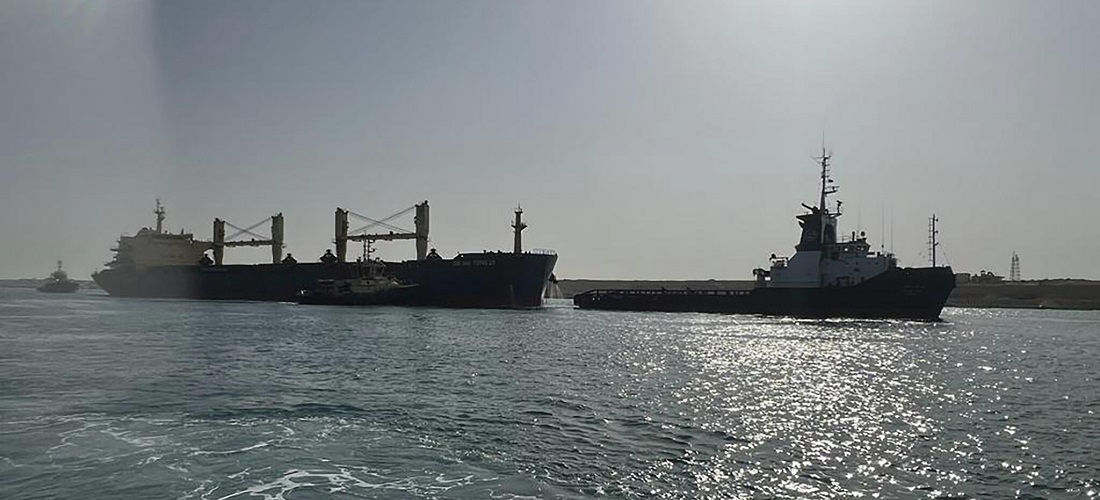
Airstrikes on Yemen bring new level of chaos to shipping in southern Red Sea
Jan, 19, 2024 Posted by Gabriel MalheirosWeek 202403
The U.S. and U.K.’s decision to hit back at Houthi militants after weeks of attacks on merchant shipping in the Red Sea has only escalated the chaos across the shipping industry, underscoring the threat of an enduring supply-chain crisis as vessels navigate the crucial trade route.
On Wednesday, Jan 17, a third commodity carrier in three days was struck, this time by a drone. Senior officials in the shipping industry privately acknowledge that many crew members are now frightened at the prospect of transit.
Shortly after the U.S. and U.K. launched airstrikes at Houthi targets in Yemen – marking a step up from the more defensive approach known as Operation Prosperity Guardian – Western navies advised ships to stay away. That guidance was publicly heeded by the owners and operators of at least 2,300 merchant vessels – and some insurers responded by restricting cover.
The result has been sharp declines in shipments through a waterway that would normally handle about 12% of global seaborne trade. Flows of oil, gas, grains and manufactured goods have increasingly been diverted. Even a livestock carrier appeared to detour, raising animal welfare concerns.
“It’s a very uncertain time, and I think all of us are waiting to see the overall impact of the ongoing Operation Prosperity Guardian, and also the most recent strikes,” said John Stawpert, a senior manager for trade and environment at the International Chamber of Shipping, which represents owners of about 80% of the global shipping fleet. “The potential impact of these attacks is horrendous” for crews, he said.
Insurance costs for those ships whose seafarers do brave the waterway have shot up tenfold, including a large increase since the airstrikes. Some underwriters are even seeking to exclude U.S., U.K. and Israeli vessels from cover, and container shipping and oil freight rates are starting to climb.
The nervous crews, fraught safety situation, disrupted transits, delayed deliveries and volatile freight markets have revived talk of inflationary pressures and costlier oil, as well as warnings of supply chain snarls that could damage the global economy.
“For us, this will mean longer transit times and probably disruption of supply chains for a few months at least,” Vincent Clerc, CEO of transport giant Maersk, said this week.
U.S. National Security Council spokesman John Kirby said Tuesday it was “too soon” to say what impact the strikes would have, but that they’d had a “good effect” in terms of disrupting and degrading the Houthis’ capability to conduct military offensive operations.
The impact on U.S. supply chains and energy prices from the conflict is limited, a U.S. official said Thursday, adding that the trade route is more important to Asia and Europe.
Most crude oil shipments from the Middle East to the U.S. Gulf Coast already go via the Cape of Good Hope, vessel tracking data compiled by Bloomberg show. Deliveries to the West Coast pass Singapore and cross the North Pacific.
At its narrowest point, the Bab el-Mandeb strait at the southern end of the Red Sea – an unavoidable waypoint for any freighter using the Suez Canal to cut between Asia or the Middle East and Europe – is about 20 miles from Yemen on one side to Djibouti on the other.
“It’s very complicated for everybody,” said Dirk Siebels, senior analyst at Risk Intelligence, a Danish security intelligence firm. “The main problem is the level of uncertainty, which is always complicated for planning purposes.”
Siebels said that up until the airstrikes, the Houthis had been sticking to targets that were connected to Israel. Since those strikes, the Houthis say they are targeting U.S. and U.K. vessels, too, and since Friday, two of the three vessels that were hit were U.S.-owned.
The disruption is affecting raw materials and consumer goods all along the supply chain. Oil from countries such as Iraq and Saudi Arabia has been disrupted by the chaos. At least 6 million barrels of crude from Iraq, the biggest Middle Eastern supplier to Europe through the Bab el-Mandeb, have been diverted.
As many vessels take the long route around Africa, firms that provide ship fuel are reporting increased demand in African and Middle Eastern locations.
In the gas market, suppliers have by and large stopped using the Suez Canal – through which any ship must also pass if it’s going through the Red Sea to cut between Europe and Asia. Qatar rerouted four LNG shipments this week heading into the Red Sea, opting instead to go to Europe via the longer route around the southern tip of Africa, according to tracking data.
Until last week, bulk ships that carry commodities such as grain, coal and metals had seen relatively little impact, but now many of those vessels are also avoiding the route. Ships hauling about 1.6 million tons of grain and headed for the Suez Canal have been diverted to other routes in the last three weeks, said Kpler analyst Ishan Bhanu. Most of that will be crops heading south for consumers in China and southeast Asia.
-
Shipping
Sep, 15, 2023
0
Green vessel Pyxis Ocean arrives at Port of Paranagua
-
Ports and Terminals
Mar, 11, 2021
0
Port of Vitória throughput up 23.14% in the first two months of 2021 YoY
-
Ports and Terminals
Jul, 05, 2021
0
Technology created in the Pecém Complex allows remote inspection of goods
-
Ports and Terminals
Oct, 21, 2021
0
Santos privatization to reduce shipping tariff by 30%


